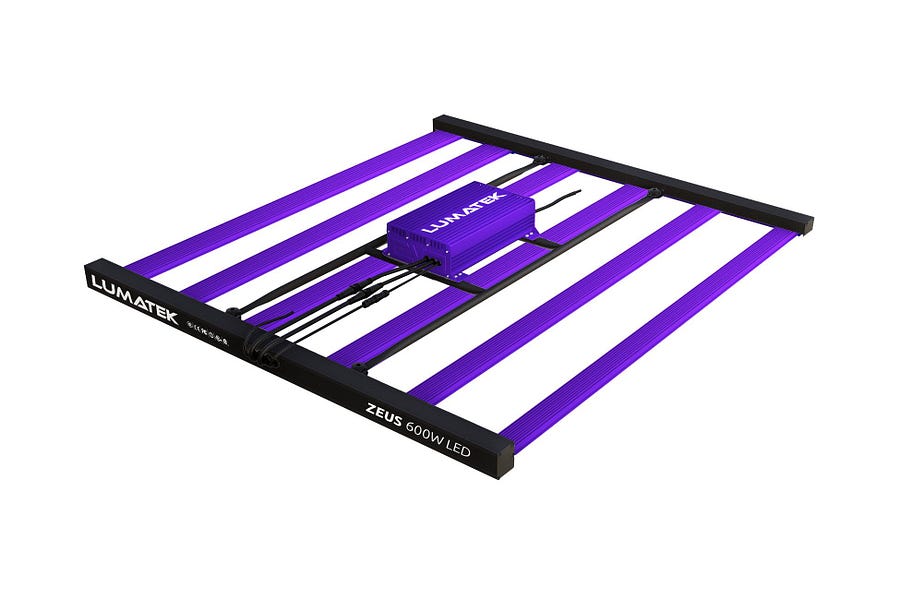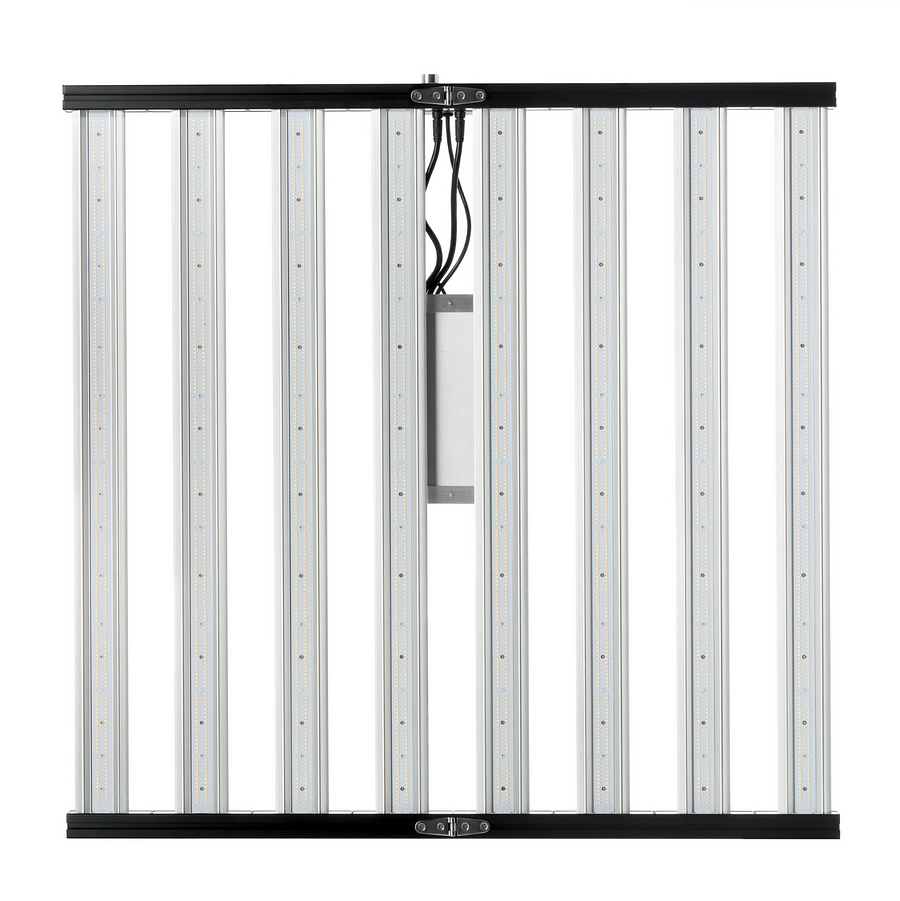- Home
-
SHOP ECO FARM
- ECO Farm Grow Lights
- ECO Farm LED Grow Lights
- ECO Farm Quantum Board
- ECO Farm Samsung LED Grow Lights
- ECO Farm COB Grow Lights
- ECO Farm Commercial Lights
- ECO Farm Supplemental Grow Light
- ECO Farm Fluorescent grow lights
- ECO Farm HPS & MH Grow Lights
- ECO Farm CMH Grow Lights
- ECO Farm HID/CMH Bulbs & Ballasts
- ECO Farm Grow Tents & Kits
- ECO Farm 2x2ft Grow Kits
- ECO Farm 3x3ft Grow Kits
- ECO Farm 3.3x3.3ft Grow Kits
- ECO Farm 4x4ft Grow Kits
- ECO Farm 5x5ft Grow Kits
- ECO Farm Grow Tent - Standard Style
- ECO Farm Grow Tent - Extension & Roof & Lodge Style
- ECO Farm Extraction & Harvest
- ECO Farm Rosin Press Machine
- ECO Farm Dry & Wet Trimmers
- ECO Farm Oil Accessories
- ECO Farm Medicinal Plants Grinder
- ECO Farm Medicinal Plants Containers
- ECO Farm Medicinal Plants Dryer
- ECO Farm Refrigeration Dryer
- ECO Farm Climate Control & Other Accessories
- ECO Farm Inline Duct Fans
- ECO Farm Oscillating Fans
- ECO Farm Exhaust Fans
- ECO Farm Air Filter
- ECO Farm Duct Muffler
- ECO Farm Ventilation Kits
- ECO Farm Plant Humidifiers
- ECO Farm Plant Dehumidifiers
- ECO Farm Hydroponic Accessories
- ECO Farm Other Accessories
- ECO Farm Hydroponics Microscopes
-
TOP BRANDS
- Grow Lights Brands
- Adjust-A-Wing
- Apollo Horticulture
- Bestva
- Black Dog LED
- California Lightworks
- ChilLED Grow Light
- Eco Farm
- HLG - Horticulture Lighting Group
- Kingled
- Kind LED
- Mars Hydro
- Morsen
- Neilo
- NextLight
- Phlizon
- PlatinumLed
- Roleadro
- Optic LED Grow Lights
- ViparSpectra
- Vivosun
- EYE Hortilux
- IPOWER
- NanoLux
- Phantom grow light
- Gavita grow lights
- Grower's Choice
- Lumatek
- Maxibright
- Yearld Pro
- ThinkGrow
- Crecer Lighting
- Green Sunshine Electric Sky
- fohse aries
- loriflux
- luxx
- fluence
- iluminar
- Lex
- LTC
- Rayonled
- FGI
- PHOTONTEK
- Grow Tents & Kits Brands
- Apollo Horticulture
- Black Box
- CoolGrows
- Eco Farm
- GrowLab
- Gorilla Grow Tents
- Mars Hydro
- Quictent
- Secret Jardin
- Unit Farm
- TopoGrow
- VIVOSUN
- Topolite
-
COMPANY INFO
-
COOPERATE WITH US
- Blog
LUMATEK ZEUS 600W LED GROW LIGHT VS Optic LED Slim 600H Dimmable LED Grow Light 600W
September 11, 2021
We all love planting especially growing the flowers, isn’t it? Some have their own front yard or backyard garden, and some don’t, so they plant indoor. But how do we ensure that they have a normal growth rate period when planting indoor? That always brings up a question of technology enhancement, and here we have come up with the solution. It is the idea of bringing LED grow lights for indoor plants that you will need to give your plants to enjoy their life.
They are the best items you can get in the market, and below are some that we have selected among LED grow lights. Below are the LED grow light reviews; feel free to check them out.
What Should Be The Right Watt/Surface Area For Indoor Gardening?
When you go out there to buy LED grow lights, you will find different watt lights. It must be more than 32 watts per square foot. But, if you are looking for optimal growth, then you must look for 50 watts- 80 watts. You can consider the following table.
1ft. by 1ft. — 32W
2 ft. by 2 ft. — 128W
3 ft. by 3 ft. — 288W
4 ft. by 4 ft. — 512W
6 ft. by 6 ft. — 1152W
Features That Makes the Best Led Grow Light
The area of coverage it can give
If it can support all the growth stages of a plant
The angle of the LED lens
Nothing beats it if it has the three above mention features but still CHEAP!
The area coverage of an LED grow light must be quite large so that it could support all your plants effectively.
Secondly, make sure to get full-spectrum LED grow lights since they can support all those growth stages of your lovely plants.
Thirdly, the greater the angles the larger the coverage. On the other hand, the lesser the angle means less dispersion and more direct light.
Lastly? Well obviously, the cheaper the better, of course, it must have quality!
Here are other minor qualities that you must look for near to ideal LED grow lights:
Quality build and materials — for this, it’s better to look for U.S. brands.
Brand reputation — obviously, a company with the best reputation makes the best LED grow lights.
Electricity output and consumption — choices go up to 1,000 watts but here’s a piece of friendly advice, don’t take anything with less than 300 watts output.
Low heat output — for preventing any unnecessary burns of the plants and it makes your LED last long.
Quality semiconductor chip — look for a chip of at least 3 watts, otherwise, it won’t be able to provide enough light.
Easiness of use and flexibility — well, it’s common sense. Make sure to read the labels to have a good grasp of your LED lights.
LUMATEK ZEUS 600W LED GROW LIGHT

Features:
The Lumatek LED is a linear multi-light bar fixture producing PPF of 1380 µmol/s and a Photon Efficacy (fixture efficiency) of 2.3 µmol/J. Lumatek full spectrum horticultural LED solutions balance light quality (spectra) with light quantity (intensity and duration) sufficient to provide single-source lighting for the entire grow cycle from vegetative through the flowering period. The array of LEDs create a uniform spread of light at a short distance to the crop enabling single source grow lighting for multi-layer cultivation systems, single benches in low rooms, and grow tents. The Zeus is built using high-quality Lumatek drivers and top bin LEDs from Osram and Lumileds Philips generating a full-spectrum light source ideal for veg and flowering cycles.
Optic LED Slim 600H Dimmable LED Grow Light 600W

Features:
The Optic LED takes Vertical Farming into a new era. Slim 600H is the vertical farming LED Grow Light that is engineered to be superior and outperforms all of the Vertical Farming LEDs on the market today. Fully equipped with the latest in High End LED technology from the best of Samsung, the best of CREE & the best from Meanwell. The Slim 600H is using over 4.5 LEDs per watt which increases the cost substantially but also delivers industry-best efficacy for LED Grow Lights with Samsung LEDs at 3.0 umols/j. Double Row LED strips with 2,760 LEDs all being under driven to max efficiency to deliver next-generation Par efficacy and a mind-blowing 1200+ ppfd at 10" & 12".
Grow Light Buyer’s Guide
While choosing a suitable grow light, the price is surely an important factor to consider, but not the only one. You have to keep in mind quite a few other factors because ultimately the light should serve your purpose. In this section, we briefly discuss these important points.
Coverage Area
Your grow light must be such that it covers the area you need. Honestly speaking, it is difficult to find lights with a large coverage when you have a limited budget. However, in our list, we have included quite a few options that provide substantial coverage.
Light Intensity
A good-quality grow light will provide your plants with the ideal light intensity for transitioning from the seedling to the flowering and fruiting stage. Note that the plants should get a minimum of 20 moles of light per day.
The light output of 40 moles is essential if you want to achieve the maximum yield from your plants. In such cases, grow lights that emit 600 uMols (for 18 hours veg mode) and 925 uMols (for 12-hour flowering mode) will be perfect. So, while going through the details of any product, make sure you check the light output that it provides.
Good Spectrum
A balanced spectrum is necessary for achieving the right plant growth. Using inferior-quality products may result in your plants receiving too much blue or red light. As such, they may take a longer time to transition from the seedling to the harvest stage.
Going for a light that uses a white spectrum or a balance of blue and red, will prove to be effective for your plants. Make sure you check the spectrum chart of each product that you’re considering.
Conclusion
For new plant-growers, starting small is always the best way to go, and all the above LED grow lights will go a long way in ensuring that you get everything you need from the crops. They come with easy assembly setups and full coverage of full-spectrum light.
Also in Indoor Grow LED Grow Light
HLG Greenhouse Pro HE HV 630W LED Grow Light VS Geeklight grow light 480W hydroponic led grow light
October 20, 2023
